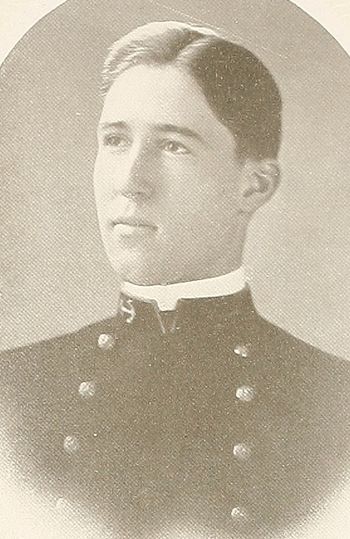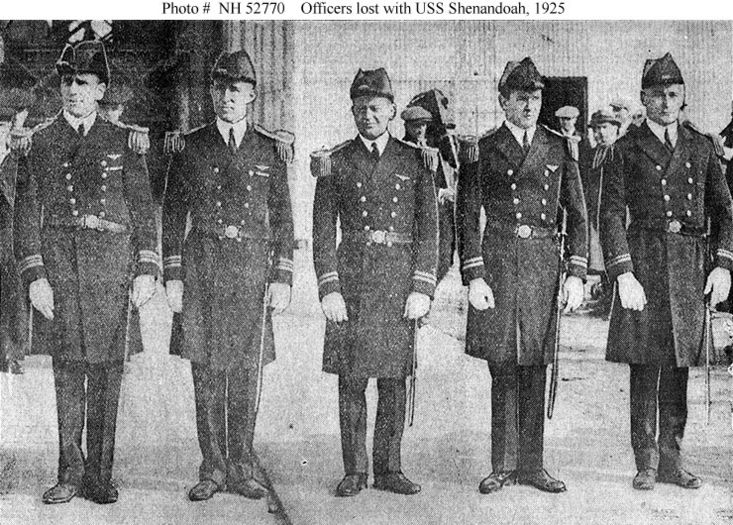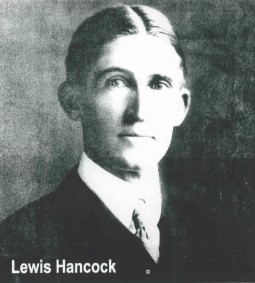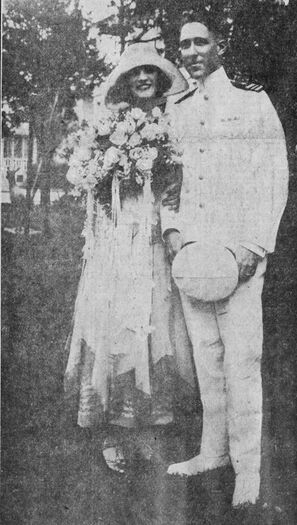LEWIS HANCOCK, JR., LCDR, USN
Lewis Hancock, Jr. '10
Lucky Bag
From the 1910 Lucky Bag:
Lewis Hancock, Jr.
Austin, Texas
"John," "Hunky"
Our John has a powerful voice
Which lost him the wife of his choice,
'Cause it gained him one more
On his cuff. John was sore,
And the moral is: Not too much noise.
ONE of our youngest, he combines with his childish naivete a certain dignity which goes well with his two stripes, which he has held down well. He has an extremely gentle disposition, which makes him quite a favorite with the ladies. He fusses regularly, but we have never been able to make him admit that he ever does it for anything except a sense of duty. A good worker at his pleasures as well as his studies. For two years he rarely cut a class basketball practice, and never grumbled or quit when others were put in ahead of him, with the result that he got his numerals when the "sure shots" won the championship. On liberty days he is usually to be found with at least one of a little clique of four, or of the old Second Company. Possesses a strict sense of the difference between right and wrong, a characteristic which has stood him in good stead on more than one occasion.
Class Basketball (2, 1). One Stripe (a). Two Stripes (a, b)

Lewis Hancock, Jr.
Austin, Texas
"John," "Hunky"
Our John has a powerful voice
Which lost him the wife of his choice,
'Cause it gained him one more
On his cuff. John was sore,
And the moral is: Not too much noise.
ONE of our youngest, he combines with his childish naivete a certain dignity which goes well with his two stripes, which he has held down well. He has an extremely gentle disposition, which makes him quite a favorite with the ladies. He fusses regularly, but we have never been able to make him admit that he ever does it for anything except a sense of duty. A good worker at his pleasures as well as his studies. For two years he rarely cut a class basketball practice, and never grumbled or quit when others were put in ahead of him, with the result that he got his numerals when the "sure shots" won the championship. On liberty days he is usually to be found with at least one of a little clique of four, or of the old Second Company. Possesses a strict sense of the difference between right and wrong, a characteristic which has stood him in good stead on more than one occasion.
Class Basketball (2, 1). One Stripe (a). Two Stripes (a, b)
Loss
Lewis was lost on September 3, 1925 when the airship USS Shenandoah (ZR 1) crashed in Ohio.
Other Information
From Naval History and Heritage Command:
Lewis Hancock, Jr. was born on 15 October 1889 in Austin, Texas. He was appointed to the U.S. Naval Academy from that state in 1906 and graduated in June 1910. He served in the battleship Vermont before being commissioned as an Ensign in March 1912, then underwent submarine instruction and served in the new submarine G-1. In 1913-1915 Ensign Hancock commanded the submarine C-2. Promoted to Lieutenant (Junior Grade) in 1915, he was Commanding Officer of the submarine L-4 in 1916-1918, receiving the Navy Cross for "distinguished service" in her during World War I combat operations against German U-boats. Later in 1918 Lieutenant Commander Hancock was Captain of another submarine, USS L-7. He also had wartime and post-war tours as a machinery inspector.
During the first years of the 1920s, Hancock served in the battleships Georgia and Wyoming, commanded the destroyer Sloat and had shore duty with the Navy Department and the Department of Commerce. Assigned to airship duty in 1922, he was designated a Naval Aviator in 1924, while serving with the dirigible Shenandoah (ZR-1). Lieutenant Commander Hancock was the airship's Executive Officer when she crashed on 3 September 1925, and lost his life in that tragic accident.
His widow, Joy Bright Hancock, a long-time employee of the Bureau of Aeronautics, became one of the Navy's first women officers in 1942 and, as a Captain, was Director of the WAVES during the later 1940s and early 1950s.
From researcher Kathy Franz:
Lewis graduated from Austin academy in June, 1905. In his youth, he played golf at the Austin Country Club.
In March 1915 Lewis was on leave, and his family gave him a party at their country home as well as a double box party at the Hancock Opera House with the performance “A Pair of Sixes.”
Per The Austin American, January 15, 1922:
The submarine AL-4 was off the west coast of England in 1918 doing patrol duty when a green hand turned a wrong valve and let in additional water ballast, causing the AL-4 to sink rapidly. . . .
“The nerve wracking details of the fight with death under Hancock’s command, of which Hancock noted in his war diary:
“Every man stood by his station in as calm and efficient a way as if an ordinary drill were being conducted,” are narrated by Professor Alden as follows in a pamphlet, entitled ‘United States Submarine Operations in the War.’
“Hancock had a short conference with his officers. At 100 feet more than their safe depth, half buried in the mud, they were admittedly in a dangerous situation. But all was calmness on the part of officers and men. Some of the latter off watch had been awakened by water coming in around the three-inch gun, but others were still asleep.
“As now there came reports of leaking at various points, one officer was directed to go forward and aft and constantly make inspections. He found that especially in the engine room the boat was leaking noticeably around the rivets, phlanges, seams, sea valves and the stern glands (through which the propeller shafts run). The hatches were also leaking slightly.
“They had tried the adjusting pump on the adjusting tank without success. Again they had to return to the expedient of blowing the bow ballast tank, and this time they decided that their critical condition warranted their going beyond the limits of caution and applying sufficient pressure, no matter how great might be required to blow the tank. But could the tank stand the strain? On this their lives depended.
“At this point someone hit upon a simple, but effective means of changing the balance of the boat, by moving the living cargo aft. There were four officers and 26 men in her complement. All except the very few required forward for the next attempt were crowded back in the shaft alley. This required the waking up of some men forward, heavy with sleep because of duty through the night. There was a look of consternation on their faces as they were told why they had been aroused, yet everybody was calm. When all was ready they applied air pressure to the bow ballast, pushing it higher and higher, till instead of the safe 90 they had it at 140 pounds. At the same time they crowded speed on the motors. The boat had been resting at an angle of 2 ½ degrees up. The bubble moved up and the bow rose a little, but only a very little, for she was still in the mud, and even when the angle had changed to 5 degrees she seemed loath to leave the bottom. However, at 6 degrees she broke loose and started for the surface.
“As now she was coming up at a steep angle, the water in the forward part of the engine room went rushing aft, where the men were. At this, thinking that disaster had finally overtaken them, they yelled out, “Stern glands have been carried away!”
“Hancock hearing the report, ordered the electrician to put all the remaining force on the motors. This inclining the boat still more, brought her to an angle of approximately 50 degrees, which was so steep that when the men in the extreme end of the engineer room tried to crawl forward they slipped miserably back in a heap.
“When she had risen to 100 feet Hancock gave orders to open the middle ballast kingstons for blowing. But the pressure built up in the tank was so great that it jerked the starboard valve open and broke one of the side blocks.
“As they reached the surface and opened the hatches to let in the blessed air and sunshine the AL-4 was a grateful and happy ship. For an hour and ten minutes she had been on the bottom at a depth, according to their gauge, of 294 feet, which closely agreed with the figures on the chart – 300 feet.
“It has been a testing of the submarine in every way. The idle and after main ballast tanks, which had been designed to stand a pressure of 75 pounds had been subjected to 127 pounds, without their leaking a drop into the battery tanks. And the forward trimming tank, built to resist a pressure of 90 pounds, had not suffered from 140 pounds. Best of all, officers and men, although conscious of how serious their situation, had given not the slightest evidence of panic or excitement. Of this Hancock noted in his war diary: ‘Every man by his station in as calm and efficient a way as if an ordinary drill were being conducted.”
Another sinking of the L-4 – or another version of the above sinking – was reported in the Austin American-Statesman, September 3, 1925: The L-4 patrolled the English channel and the Irish Sea. “On one occasion, a depth bomb shattered the hull of the L-4 and seriously impaired its machinery. The submarine, unable to operate on its own power, went to the bottom of the channel.
“Here for several hours with death staring the young commander in the face, he encouraged his men to stick to their task of repairing the craft. And here it was that his knowledge of engineering came to his rescue, for the L-4 was finally repaired and brought safely to the top again, but only after several of Hancock’s crew had narrowly escaped death from suffocation.”
Lewis was second in command of the dirigible USS Shenandoah (ZR-1) when she left Lakehurst, New Jersey on October 7, 1924, for her round trip cruise to the Pacific coast. While refueling in Fort Worth, Lewis met with his uncle and aunt, Mr. and Mrs. Reuben Anderson. The round trip of 8100 miles with 235 hours in the air ended on October 25 after going to San Diego and Camp Lewis at Tacoma.
After stopping in Fort Worth where the navy’s helium plant was located, Lewis had hoped that their flight path would take them over San Antonio and his hometown of Austin. He received messages about Austin’s disappointment including one from Max Bickler, chairman of the Austin chamber of commerce aviation committee. Lewis wrote back that on the next trip to Fort Worth he hoped Austin would be included “as I feel the Capital City of the state, which produces all the helium, is more than entitled to a visit from the Shenandoah.”
The Shenandoah was scheduled to make a trip to the north pole in the spring of 1925 for the purpose of mapping the Arctic region. However, President Coolidge cancelled those orders.
On June, 3, 1924, Lewis married Mrs. Joy Bright Little, daughter of Senator and Mrs. William H. Bright of New Jersey, at her parents’ home in Wildwood. Her first husband Lt. Charles Little was killed in 1920 when the dirigible R-2 exploded in England. In October, 1928, she was at the arrival of the Graf Zeppelin in Washington, D. C. She still believed in the dirigible as a mode of transportation and hoped to be on the Graf on its return to Germany.
Lewis’ father was a capitalist, mayor, vice-president of the State National Bank, founder of the Austin Country Club, and owner of the Hancock Opera House. Lewis’ mother “Tillie” (Anderson) was the daughter of A. W. Terrell, former U. S. Minister to Turkey.
Lewis’ sisters were Louise, who died young, Margaret (Mrs. Stedman Hanks,) Mildred, and Dorothy (Mrs. Baylis.) In April 1912 Dorothy as “Duchess of Austin” attended the carnival festivities at San Antonio. Her gown for the coronation ceremonies was made of heavy white satin, heavily embroidered in pearls and rhinestones, rubies and emeralds and lined with cloth of gold. Her tiara was made of diamonds and pearls.
Lewis’ grandfather was George Hancock, a Battle of San Jacinto veteran, early settler of Austin, and co-owner since 1830 of the Trading Post at Sixth and Congress in Austin.
Lewis’ cousin Thad Thomson, Jr., graduated from the Naval Academy, Class of 1907.
Since 1884, Lewis’ family owned a historic mansion which burned down in September, 1908. It had been owned for ten years by Judge A. W. Terrell (Lewis’ other grandfather) who said it was erected in 1856 by Mrs. Ragsdale, a widow from Mississippi. In May, 1912, lots were sold making it into the Aldridge Place and Hemphill Park areas. This area is bounded by Guadalupe and Speedway, and 31st to 34th Streets.
In 1900, the Hancock family lived at the country home “Sunnyridge Farm.” This two-story home was built in 1850 by George Hancock’s business partner, Frances Dietrich. Indians killed Dietrich the next year. The home at 3401 Red River was bulldozed in 1967 for apartments.
Lewis is buried in Arlington National Cemetery.
Photographs
"Five of the airship's officers, all of whom were killed when she crashed on 3 September 1925. Halftone reproduction of a photograph taken at Naval Air Station Lakehurst, New Jersey, some time prior to the tragedy, and published in the "Evening Star", Washington, D.C., Friday, 4 September 1925. Those present are (left to right): Zachary Lansdowne '09, Commanding Officer; Lewis Hancock, Jr. '10, Executive Officer; Lieutenant John B. Lawrence; Lieutenant Arthur R. Houghton; and Lieutenant (Junior Grade) Edgar W. Sheppard."
From Hall of Valor:
The President of the United States of America takes pleasure in presenting the Navy Cross to Lieutenant Commander Lewis Hancock, Jr., United States Navy, for distinguished service in the line of his profession in Command of the AL-4 during World War I. Under his command this vessel made numerous contacts with the enemy, and on one occasion attempted the dangerous feat of diving at a submerged enemy submarine to ram her.
Service: Navy
Division: U.S.S. AL-4
Related Articles
Zachary Lansdowne '09 was the commanding officer of Shenandoah.
The "Register of Commissioned and Warrant Officers of the United States Navy and Marine Corps" was published annually from 1815 through at least the 1970s; it provided rank, command or station, and occasionally billet until the beginning of World War II when command/station was no longer included. Scanned copies were reviewed and data entered from the mid-1840s through 1922, when more-frequent Navy Directories were available.
The Navy Directory was a publication that provided information on the command, billet, and rank of every active and retired naval officer. Single editions have been found online from January 1915 and March 1918, and then from three to six editions per year from 1923 through 1940; the final edition is from April 1941.
The entries in both series of documents are sometimes cryptic and confusing. They are often inconsistent, even within an edition, with the name of commands; this is especially true for aviation squadrons in the 1920s and early 1930s.
Alumni listed at the same command may or may not have had significant interactions; they could have shared a stateroom or workspace, stood many hours of watch together, or, especially at the larger commands, they might not have known each other at all. The information provides the opportunity to draw connections that are otherwise invisible, though, and gives a fuller view of the professional experiences of these alumni in Memorial Hall.
January 1912
January 1913
January 1914
January 1915
January 1917
March 1918
January 1919
January 1920
January 1921
January 1922
May 1923
July 1923
September 1923
November 1923
January 1924
March 1924
May 1924
July 1924
September 1924
November 1924
January 1925
March 1925
May 1925
July 1925
Namesake
USS Lewis Hancock (DD 675) was named for Lewis; the ship was sponsored by his widow.

The "category" links below lead to lists of related Honorees; use them to explore further the service and sacrifice of alumni in Memorial Hall.


